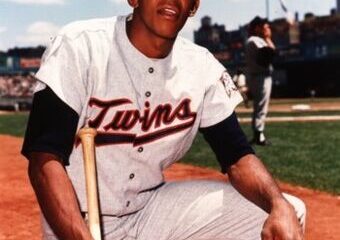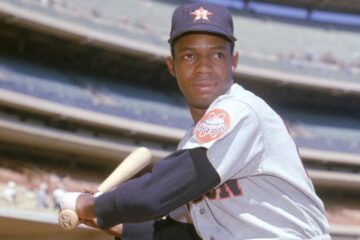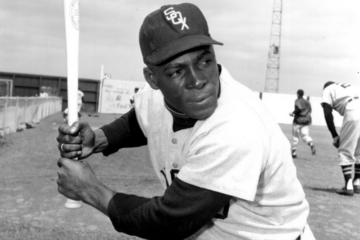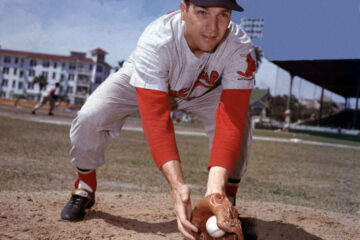The Hall of Fame Index: Who is the most qualified catcher not enshrined?
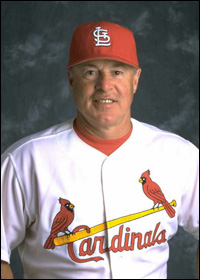
The main idea behind The Hall of Fame Indexis that the question of whether any individual player is a Hall of Famer is the wrong question. The real question is which player is the most qualified player not in the Hall of Fame. This can only be broken down by position. So, for our purposes in this series we are only looking at players that are either on the ballot or have been on the ballot in the past.
That excludes players like Joe Mauer and Buster Posey in the catcher universe. When Ted Simmons was elected it immediately created a logjam for the top spot amongst catchers not yet enshrined. The first thing we look for is separation. As usual, we will look at all of the relevant information before we make a final determination.
Career Value
| BWAR | FWAR | WS/5 | Total | |
| Bill Freehan | 44.7 | 44.8 | 53.4 | 142.9 |
| Gene Tenace | 46.8 | 45.0 | 46.2 | 138.0 |
| Jorge Posada | 42.7 | 40.4 | 51.6 | 134.7 |
| Thurman Munson | 46.0 | 40.9 | 41.2 | 128.1 |
The fascinating aspect of value is that there are a number of different ways to arrive at it. All four of these catchers is significantly different, but we could put them into two different categories. Both Munson and Freehan were all-around players that would fit the model of the catcher you’d expect from central casting. Obviously, Freehan played longer, so he enjoyed the better career value. Yet, we haven’t arrived at peak value yet.
Posada and Tenace were offense first catchers. The main difference is perception. Posada spent his entire career behind the dish and played in a time when his offensive strengths were more appreciated. Still, they all come out with similar value scores and that will become even more pronounced when we get to peak value.
Peak Value
| BWAR | FWAR | WS/5 | Total | Index | |
| Tenace | 41.5 | 40.1 | 41.0 | 122.6 | 260.6 |
| Freehan | 36.8 | 36.9 | 42.6 | 116.3 | 259.2 |
| Posada | 39.7 | 41.5 | 43.0 | 124.2 | 258.9 |
| Munson | 45.7 | 40.4 | 40.8 | 126.9 | 255.0 |
The index is the beginning of the argument and not the end. Tenace takes the top spot, but less than six wins separates him and Munson. Since we have three different sources and that is divided into career and peak value, that means that they are separated by maybe one real win. If anyone feels comfortable running with that result, they are free to do so, but I’m not going there.
That leaves us with two choices. We can either choose to say that none of them is more qualified than the other, so none of them really deserve to be in the Hall of Fame, or we can pick one of them using some of our other criteria. Immediately, the focus will be on Munson’s premature death. After all, he is the only one of the four to win an MVP award.
Offensive Numbers
| OPS+ | Rbaser | OW% | wOBA | |
| Tenace | 156 | -14 | .665 | .373 |
| Posada | 121 | -34 | .595 | .367 |
| Munson | 116 | 11 | .561 | .340 |
| Freehan | 112 | -7 | .591 | .339 |
I’ve stated this before but looking at hitting and fielding numbers for someone like Munson presents a dilemma. He never had the benefit of a decline phase of his career. Sure, it sounds like a curse and in terms of the numbers here they are a curse. Yet, keep in mind the difference between career and peak value numbers for the other three. Tenace had a separation of about five wins in all three platforms. Posada had a three-win differential. Freehan was separated by about eight wins a piece.
If we average that out and apply it to Munson then we would see him with a peak value of around 145 wins. That would throw his index score to around 275 and give him some separathion from these players. It also means he likely would finish considerably worse when looking at these numbers.
I’d be remiss not to focus a bit on Tenace. When Theo Epstein took over as Boston’s GM the local media adapted the classic “I’m down with OPP” and turned it into “I’m down with OBP.” Tenace was a 1990s and 2000s player trapped in the 1970s. He got on base and did it with great proficiency. Unfortunately, people focused on the low batting average. That means when we look at awards voting (such as MVP awards and all-star games) he will come out looking ordinary. He was anything but ordinary.
Fielding Numbers
| Rfield | DWAR | TZC | DWS/5 | |
| Freehan | 28 | 12.0 | 26 | 17.9 |
| Munson | 32 | 11.9 | 34 | 12.4 |
| Tenace | -8 | 1.8 | -6 | 8.3 |
| Posada | -80 | 2.6 | -87 | 13.3 |
The aforementioned Tenace doesn’t look good here, but that comes with quite a bit of context. First, the numbers that use average as a reference (Rfield and total zone) indicate that he was about as close to average as you can get. The other two are more reflective of the fact that he moved around the diamond some, so he didn’t have the same volume of games caught as the other catchers. That kind of context cuts both ways. Unfortunately, we don’t have pitch framing data from the 1970s, so we don’t know if the desire to move him to first base and other positions was warranted.
Posada is the only catcher with pitch framing data here and that data is pretty ugly. If they had tracked it for his entire career his numbers would have been worse. It’s hard to trumpet someone for the Hall of Fame that is so obviously deficient in one of the major facets of the game. That comfortably leaves the other three still in the running.
Playoff Numbers
| PA | SLASH | HR | Runs | RBI | |
| Posada | 492 | .248/.358/.387 | 11 | 53 | 42 |
| Tenace | 146 | .158/.338/.389 | 4 | 10 | 14 |
| Munson | 135 | .357/.378/.496 | 3 | 19 | 22 |
| Freehan | 41 | .139/.235/.278 | 1 | 2 | 5 |
It’s hard to take Freehan too seriously with these numbers, but we have to remember that anything can happen in 41 plate appearances. Also, one of those series came in 1968 which is commonly referred to as the year of the pitcher. All numbers have a context after all. Their context often is tied to the reputation that players have years after the fact.
All three of the top three played on multiple champions, so you could argue that all three played integral roles on those teams. Still, Munson is the one that often was considered the guy that the Yankees couldn’t live without during those title runs. He might charitably be considered the Derek Jeter of his day in that in any individual season there might have been someone better (Reggie Jackson) but he was the common thread that held it all together.
The fact that they immediately stopped winning the title after he passed could be linked to his demise or not depending on your point of view. People don’t have those same feelings about Tenace in Oakland or Posada in New York. What we see here is that the numbers back up the contention that Munson was special. Most people know that 135 plate appearances is not much, but perception is often reality.
BWAR MVP Points
| Top 10 | Top 5 | MVP | Points | |
| Tenace | 2 | 1 | 0 | 11 |
| Freehan | 2 | 1 | 0 | 11 |
| Munson | 1 | 1 | 0 | 8 |
| Posada | 0 | 1 | 0 | 5 |
If we go back to the opening question, we see overwhelmingly that we simply cannot see a player that is clearly more fit than another. I can choose a Gene Tenace because I like more offense than others. I can choose Munson because I think he likely would have been more fit if he had been allowed to finish his career. I could even choose Freehan because he combined solid offense and solid defense for about 15 seasons.
The long and short of it is that I’m not dying on a hill for any of these guys. I’m also not dying on a hill to keep any of these guys out. I think the BBWAA and Veterans Committee can expend their energy on other positions before they come back to this one. If I had to pick one today, I’d go with Tenace, but my answer might be different at another time and with more information.


